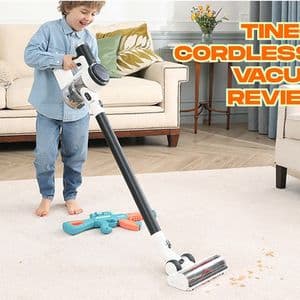Why Handheld Vacuums Deserve Attention
Handheld vacuums were once considered secondary cleaning tools. Today, they stand out as versatile, portable devices designed to tackle everyday messes that upright vacuums often miss.
From crumbs in the car to fur on furniture, handheld models fill a unique role. Their size, convenience, and improving technology make them worth a closer look.
Key Features That Define Quality
Suction Power and Efficiency
At the core of every handheld vacuum is its suction ability. Without adequate suction, even the lightest debris becomes a challenge. Motor strength, airflow design, and nozzle construction all contribute to real-world effectiveness.
Consumers often find that higher wattage or voltage does not always equal stronger suction. Instead, balance between motor efficiency and airflow optimization is critical.
Battery Life and Corded vs. Cordless
Cordless convenience has reshaped the market. Many users now favor mobility over being tethered to a wall outlet. However, battery performance varies greatly.
Some models last only 10 minutes on high power, while others can sustain 30 minutes or more. For pet owners, choosing the best cordless handheld vacuum for pet hair means prioritizing a balance between runtime and consistent suction.
Filtration and Allergen Control
Filtration is often overlooked in handheld vacuums. Yet, for allergy-sensitive households, this detail is essential. High-Efficiency Particulate Air (HEPA) filters can trap fine dust, dander, and allergens that ordinary filters miss.
Reusable filters add convenience, but maintenance plays a role in performance. Regular cleaning ensures efficiency and prevents clogs.
Specialized Uses
Pet Hair Removal
One of the strongest drivers of handheld vacuum sales is pet ownership. Loose fur accumulates quickly, and traditional vacuums can’t always reach furniture edges, stairs, or car interiors.
Models designed specifically for this purpose integrate specialized nozzles, motorized brushes, and targeted suction. A good example is the Bissell handheld pet vacuum, widely recognized for its focus on animal hair management.
Stairs and Hard-to-Reach Areas
Lightweight design is crucial for maneuvering on stairs. Many upright vacuums are heavy and awkward on steps, making handheld alternatives more practical. Users seeking the best handheld vacuum for dog hair often evaluate ergonomics and attachments for precisely this reason.
Stair cleaning requires not only portability but also tools that can handle both carpet fibers and hard surfaces. Crevice tools and mini-motorized heads are especially helpful.
Design Elements That Matter
Ergonomics and Weight
Comfort matters when using a handheld vacuum for extended periods. A poorly balanced design can strain the wrist and arm, especially when cleaning above the floor level.
Lightweight materials combined with intuitive handle placement can significantly improve usability.
Dustbin Capacity and Ease of Emptying
Though smaller than full-size vacuums, dustbin design still affects practicality. A quick-release system that minimizes direct contact with debris makes the process cleaner and more efficient.
Some vacuums integrate translucent bins, allowing users to see when emptying is needed. Others rely on sensors or indicators.
Noise Levels and Everyday Usability
Noise often dictates how frequently a household uses a handheld vacuum. While no model is silent, engineering improvements reduce high-pitched tones and overall volume.
A quieter device encourages use during evenings, around pets, or in shared spaces without disruption.
Durability and Longevity
Longevity depends on build quality and component reliability. Cheaper plastics may crack or loosen with time, while durable housings can withstand years of use.
Motor lifespan, battery recharge cycles, and filter integrity all influence total product life.
The Broader Impact of Handheld Vacuums
Beyond personal convenience, handheld vacuums reflect a larger trend in home cleaning technology. Compact, portable devices show how innovation adapts to changing lifestyles—favoring flexibility, quick responses, and targeted cleaning.
They may never replace upright or robotic vacuums entirely, but their contribution is clear. For many households, they provide the right balance of speed, efficiency, and adaptability.
Conclusion
Handheld vacuums reviews highlight more than just specifications. They reveal how these compact cleaners address real-world problems—pet hair, stairs, allergens, and everyday messes.
By focusing on suction, battery life, ergonomics, and design, you can evaluate models with clarity. And while specialized terms like best cordless handheld vacuum for pet hair, Bissell handheld pet vacuum, and best handheld vacuum for dog hair capture niche needs, the bigger picture is about practicality.
Ultimately, handheld vacuums prove that small devices can deliver significant results.










